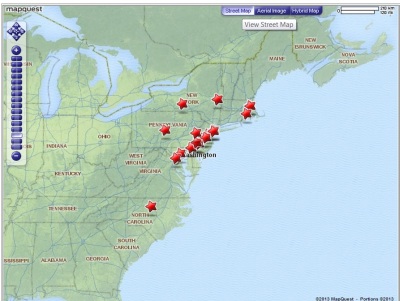Breaking The "Zone"
 Friday, August 23, 2013 at 10:35 AM
Friday, August 23, 2013 at 10:35 AM  In his book, How To Make Colleges Want You: Insider Secrets for Tipping the Admissions Odds in Your Favor, Mike Moyer, former Vice President & Dean of Enrollment at the University of Chicago and the founder of Cappex.com, provides several strategies to help boost your admissions chances at competitive colleges. One of the most useful of his tips is called “Breaking the Zone” and it can significantly increase your chances of being accepted to a competitive school.
In his book, How To Make Colleges Want You: Insider Secrets for Tipping the Admissions Odds in Your Favor, Mike Moyer, former Vice President & Dean of Enrollment at the University of Chicago and the founder of Cappex.com, provides several strategies to help boost your admissions chances at competitive colleges. One of the most useful of his tips is called “Breaking the Zone” and it can significantly increase your chances of being accepted to a competitive school.
Understanding the Zone
“Describing the Zone is simple: it is the most obvious place that you as a student would look for a college to go to. If you are willing to look outside your Zone, you are much more likely to be noticed” (Moyer, 65).
Geography is one of biggest of the college zones - the vast majority of students attend colleges that are close to home. According to The Chronicle of Higher Education:, 53% of freshman attend college within 100 miles of home while only 14% of freshman attend a college that is more than 500 miles away from home.
Our application history in Naviance tells a similar history. Below is a map with the locations of the 20 most popular college destinations of Biotechnology High School Students. As you can see, most of our students stay in the Northeast.

Moyer explains,“If you’re from Illinois, for instance, you are likely to apply to University of Illinois at Urbana-Champaign, University of Illinois at Chicago, Marquette, Lawrence, Purdue, Notre Dame and perhaps Northwestern and University of Chicago. Your zone includes these schools and every other student in your zone shares the same list. So the colleges in this Zone get a lot of applications from similar-looking students. Adults have a hard enough time telling one teenager from the other. Now they have a huge group of students from the same high schools with the same grades and the same sports. What do they do? The answer is they desperately look for alternatives to this mass of similar-looking people” (Moyer, 66).
While applying to a college outside of the Northeast is probably the easiest zone to break, there are also other Zones to be broken. Remember a Zone is something that is common or expected, breaking the Zone requires doing something uncommon or unexpected.
Other examples of Zones include:
- Ethnic
- Religious
- Academic / Major
- Gender
- Athletic
- Extracurricular
- Socioeconomic
If you fall outside of a zone at any particular college, not only will your chances of being accepted increase, but you will also be more likely to receive better financial aid offers. The strategy works because colleges want to strengthen the diversity of their community. Admissions officers notice differences, not similarities.
We recommend that each student apply to at least one college that is out of their Zone. Applying to a college outside of your Zone does not mean that you are compromising. Look for colleges outside of your Zone that have the main characteristics of your “Zone” schools - ie: a small, intimate campus atmosphere with a pre-med track.
Going to college outside of your “comfort zone” may not be easy, but it could also be extremely rewarding. In the words of Moyer, “being from outside the zone may make you nervous and it can be scary, but will only last a few minutes. In fact, the reason it works so well is because so many students can’t get over that fear, so they choose a college within their Zone. Your willingness to step outside the Zone will pay off” (76).
For additional guidance on how you can break your Zone, click here for suggested questions to ask admissions representatives and/or research and answer on your own.
 Site Director | Comments Off |
Site Director | Comments Off |  College Info
College Info 